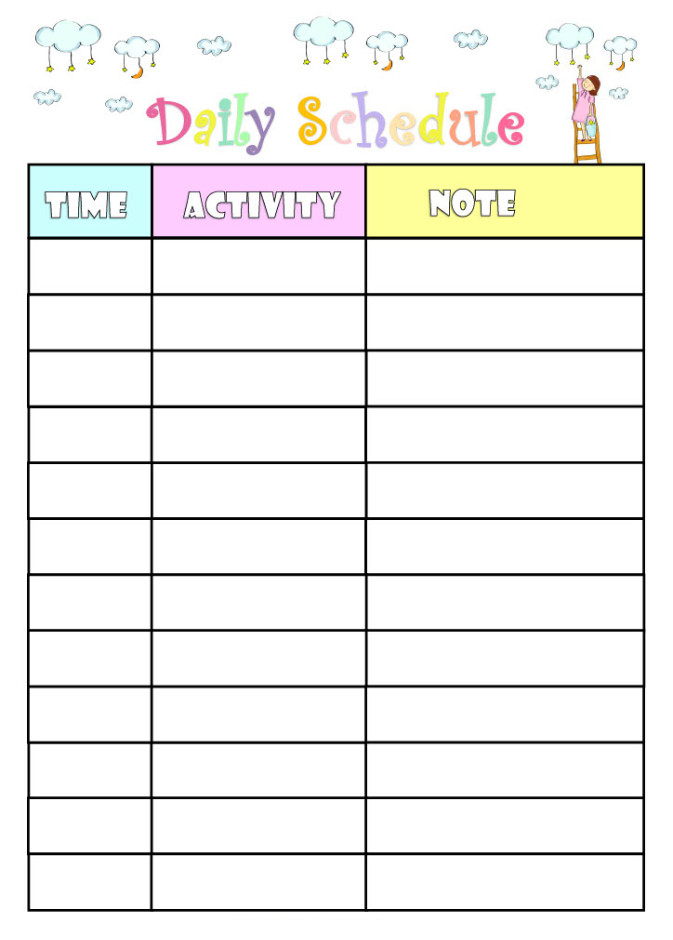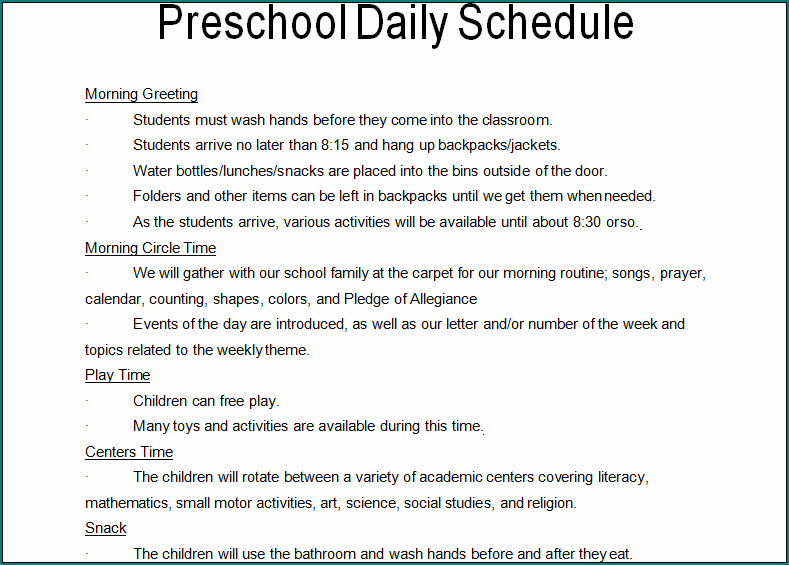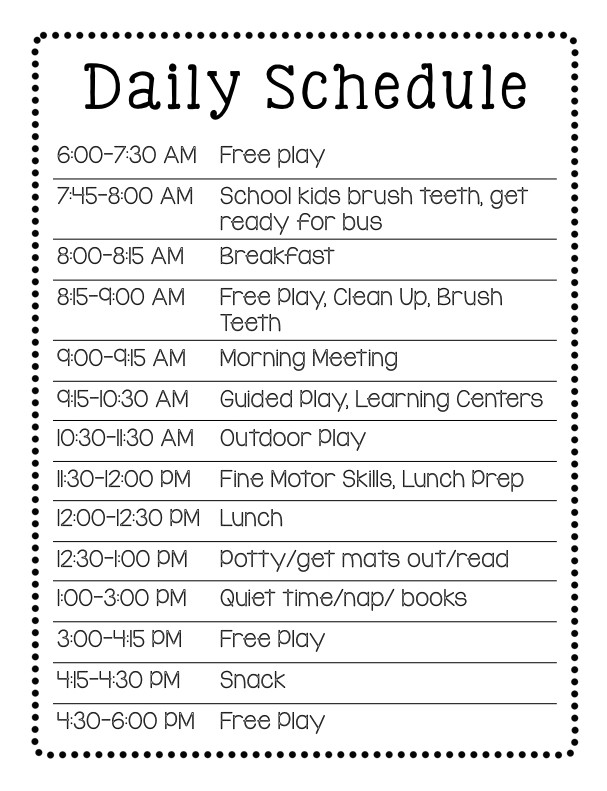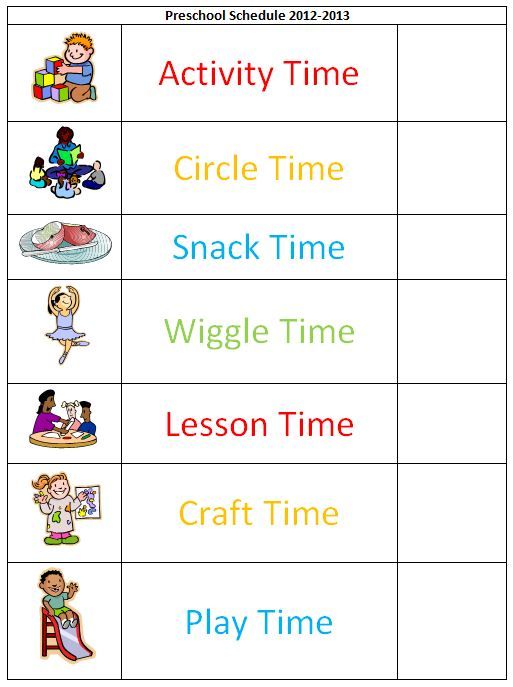A preschool daily schedule is a visual representation of the activities and routines that occur in a preschool setting. It outlines the specific times for different activities such as circle time, playtime, snack time, and nap time.
This schedule is typically displayed in the classroom and can also be shared with parents to help create a consistent routine for young children.

Why is a Preschool Daily Schedule Important?
A preschool daily schedule is important because it creates a structured and predictable environment for young children. This predictability helps children feel secure, understand expectations, and learn to manage their time and activities.
By following a daily schedule, children can develop a sense of routine and learn valuable skills such as time management and self-regulation.
How to Create a Preschool Daily Schedule
Creating a preschool daily schedule is a simple and effective way to provide structure and support for young children. Here are the steps to create a schedule:
1. Start with a basic template: Begin by creating a basic template for your schedule. This can be done using a word processing program or a scheduling app. Divide the schedule into blocks of time and include specific activities for each block.
2. Determine the daily routine: Consider the typical daily routine in your preschool and determine the key activities that should be included in the schedule. This may include circle time, outdoor play, snack time, art activities, and more. Be sure to allocate enough time for each activity to allow for smooth transitions.
3. Add visuals and graphics: Enhance your preschool daily schedule by adding visuals and graphics. Use pictures or icons to represent each activity to make it more engaging and accessible for young children. This will help them understand the schedule even if they are not yet able to read.
4. Include flexibility: While it is important to have a structured schedule, it is also important to allow for flexibility. Young children may need extra time for certain activities or may need to take breaks throughout the day. Build in time for flexibility and be prepared to make adjustments as needed.
5. Share the schedule: Once you have created the preschool daily schedule, share it with your students and their parents. Display the schedule in the classroom and provide copies to parents so they can reinforce the routine at home. This will help create consistency and reinforce the structure both in and out of the classroom.
Examples of Preschool Daily Schedules
Here are a few examples of preschool daily schedules to help you get started:




Tips for Successful Implementation
To ensure the successful implementation of a preschool daily schedule, consider the following tips:
- Consistency is key: Stick to the schedule as much as possible to create a sense of routine and predictability for young children.
- Provide visual cues: Use visuals and graphics to help children understand the schedule, even if they are not yet able to read.
- Allow for flexibility: Be open to making adjustments to the schedule as needed to accommodate the individual needs of the children in your care.
- Communicate with parents: Share the schedule with parents and encourage them to reinforce the routine at home.
- Be prepared for transitions: Build in extra time for transitions between activities to help children adjust and prepare for the next activity.
- Involve children in the process: Engage children in creating the schedule by asking for their input and allowing them to make choices within the structure of the schedule.
- Use positive reinforcement: Recognize and praise children for following the schedule and meeting expectations.
- Review and revise: Regularly review the schedule and make revisions as needed to ensure it continues to meet the needs of the children in your care.
Conclusion
A preschool daily schedule is a valuable tool for creating a structured, predictable, and supportive environment that fosters learning, development, and overall well-being for young children.
By providing a consistent routine, children feel secure, understand expectations, and learn to manage their time and activities. By following the steps outlined in this article and incorporating the tips for successful implementation, you can create an effective and engaging preschool daily schedule that benefits both children and caregivers.
Preschool Daily Schedule Template – Download